Concrete foundation for the house: types and manufacturing features
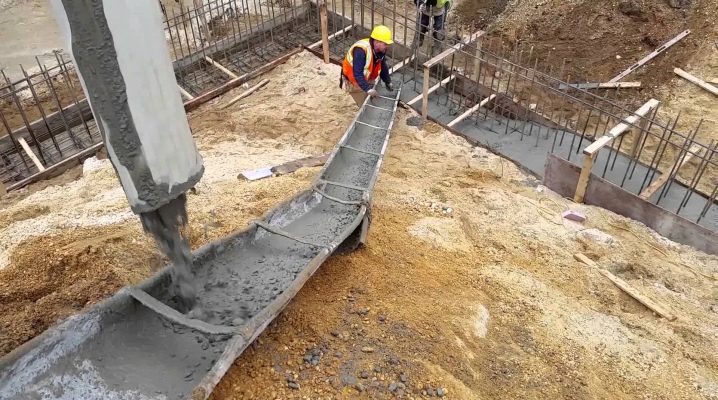
The foundation is the most important part of any building, be it a residential high-rise or a large factory, on which the safety of the entire building depends. There are many materials from which various types of support structures are erected. The choice of the correct foundation can be influenced by factors such as the purpose of the building, the terrain, the composition of the soil, weather conditions and much more. One of the most reliable and durable materials for the construction of such a support is concrete.
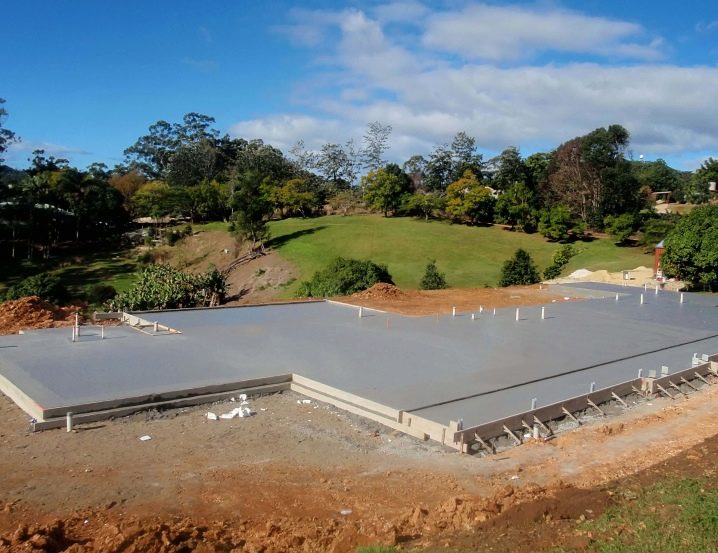
Description
A concrete foundation is a self-hardening mixture of a binder, which is cement, hydrosilicate gypsum and other materials. In addition, it contains gravel and sand in the required proportions, as well as water, which allows you to turn the dry mixture into a thick solution to fill the space between the fine particles with the binder. Compared to other foundations, a concrete foundation has such advantages as:
- uniform shrinkage, excluding cracks and deformation of the entire structure;
- concrete (and especially reinforced concrete) has the longest service life compared to other materials;
- availability and low cost of material and work;
- the unique properties of the material, which can be changed directly in the process of work, allow even complex architectural ideas to be realized.
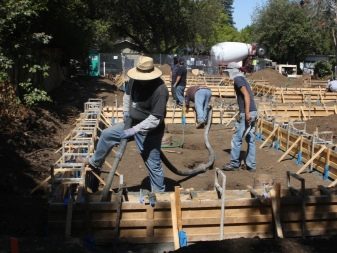

How does it work?
Like any structure or structure, the device of a concrete foundation must be based on certain building codes (SNiP 3.02.01-87). They determine exactly how and in what proportions various mixtures are prepared and how to stack them.
- Sand. For high-quality concrete, grains of sand should be 1-3 mm in size and not contain a large amount of silt or clay impurities. The permissible percentage of foreign particles in the sand is no more than 5%.
- Gravel. The size of stones should not exceed 8 cm, they should also not contain a large amount of foreign matter. Crushed stone can be used instead of gravel, which meets the same requirements.
- Cement. There are several types of cement that can be used to prepare a concrete mixture - pozzolanic cement, slag Portland cement, Portland cement. The latter is most often used in the construction of the foundation and is the most suitable. In addition, each type of cement has a marking (300, 400, 500), which shows the compressive strength in kg / cm².
The cement grade should always be 1.5–2 times higher than the concrete grade, which is necessary for different structures, depending on their weight. So, for a private two-story house concrete M300 and M350 are suitable, for a wooden summer cottage - M250, and for a garage door or a high fence - concrete M200.
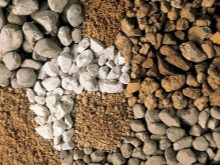

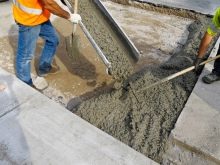
The ideal proportion for preparing concrete is a 1: 3: 5 ratio of cement, sand and gravel. Water is added in such quantity, in which it is necessary to obtain a particular grade of concrete and is indicated in various regulatory documents.
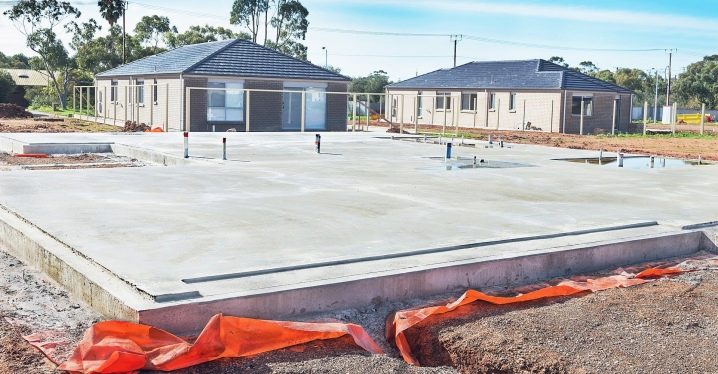
What happens?
Despite the fact that the main foundation material is concrete, according to its design features, it is divided into several types.
- Column foundation is a concrete straight or screw piles that are placed in the ground using a specially designed technique. The biggest disadvantage of this type is the impossibility of arranging a basement in the building, as well as the need for additional insulation.
- Strip foundation Is a continuous line of hardened concrete located under all external and internal load-bearing walls. With high-quality heat and waterproofing, such a foundation allows you to arrange a basement in a building. It is the strip foundation that is most often built with their own hands, since it does not require expensive equipment and high skills.
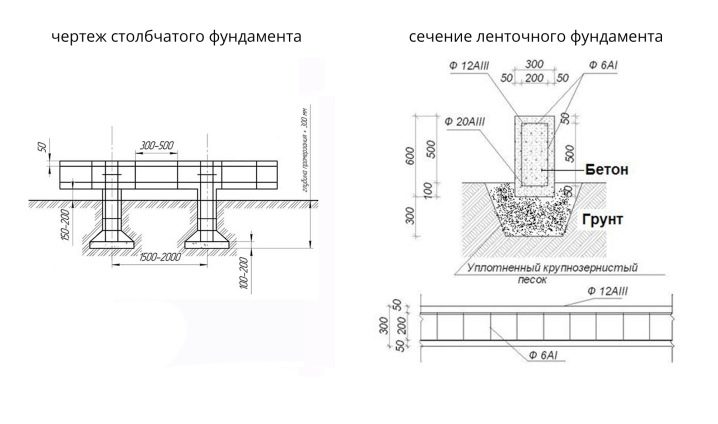
In addition, the concrete foundation is divided into the following types:
- rubble concrete - the solution layer is covered with a strong rubble stone;

- foam concrete - this foundation is assembled on the spot from the brought foam blocks;
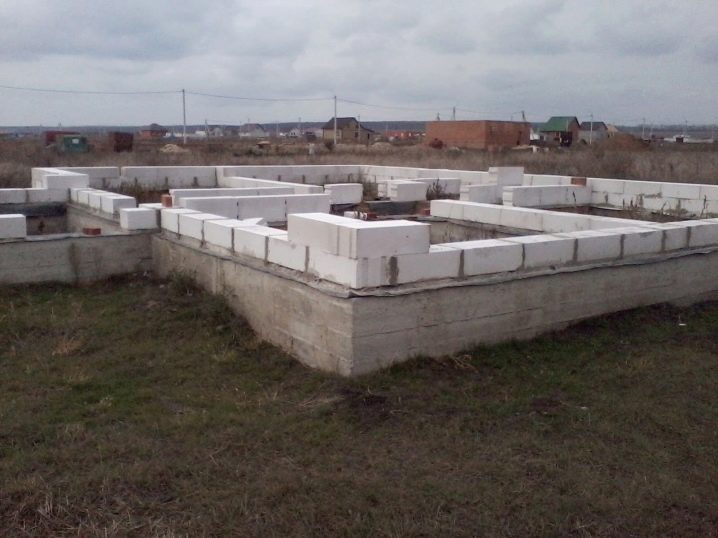
- reinforced concrete (monolithic) - the welded reinforcement structure is placed in the dug recesses and poured from above with concrete mortar.

How to do?
It is not at all necessary to buy ready-made concrete or pay for the services of a concrete mixer, the solution is easy to prepare at home. The main thing is to follow the resulting calculations and proportions as accurately as possible, to try to maintain the purity of the process. Since a strip concrete foundation is being built under almost all country houses, you should dwell on the process of its construction in more detail.
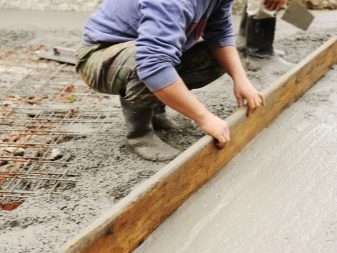
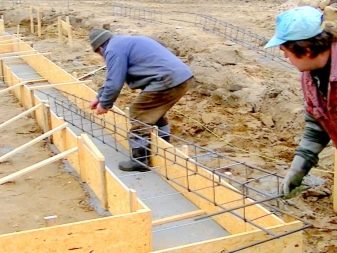
Blueprints
Before proceeding with the calculations, it is necessary to collect all permits from local authorities so that in the future there will be no misunderstandings. After receiving all the papers, it is necessary to draw up a general foundation plan, on the accuracy and detail of which the quality of all work depends. The drawing itself must be created based on the calculations of the following indicators:
- type of soil on the site - its composition, density, moisture content, etc. are taken into account;
- degree of load increased during operation (objects and people that will be inside the finished structure, as well as changes in weather conditions and precipitation);
- the weight of the structure itself. The average weight of certain structures of a house can be obtained from various reference books and standards, and their volume and area - by multiplying the length, height and width of one structural element.
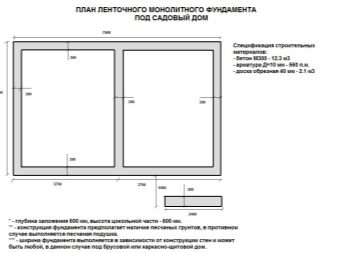
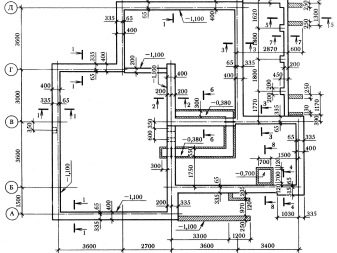
Manufacturing process
Any construction begins with the preparation of the site - all debris and grass are removed, the top layer of sod is removed. According to the drawings drawn up, with the help of stakes and a rope, the location of the foundation is outlined, and a trench is dug along the indicated boundaries if the basement is not planned, or a pit if the basement is supposed. A trench is dug under the internal load-bearing and all external walls of the future home.
After digging the trench, you can start erecting the formwork in the event that it is needed. It can be built from any remnants of boards, or you can purchase a ready-made collapsible or non-collapsible in a specialized store.
On the surface of the installed formwork, waterproofing is applied or laid, which protects the foundation from the effects of sedimentary and groundwater. It is best to combine both roll and coating waterproofing.
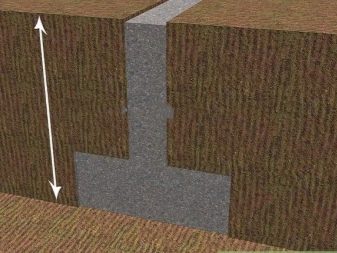
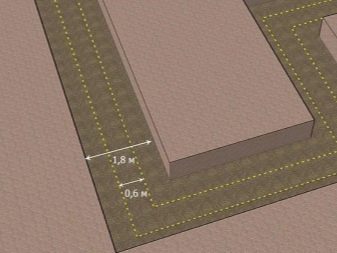
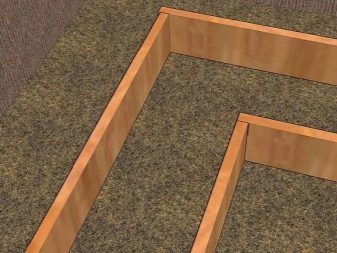
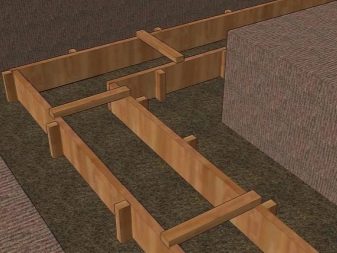
A special frame is made of reinforcing bars and placed inside the formwork on brick fragments. You can fix a steel pipe with others both by simple welding and by "tying" together. The first option is less reliable, since welding reduces the strength of the entire structure. After installing the reinforcement, a well-mixed cement mortar can be poured. NS
When preparing the solution with your own hands, it is impossible to do with the forces of one person, since you will have to prepare a large amount of the mixture at once. It is best to use special concrete mixers or purchase a ready-made mixture.
The poured, but not hardened mortar must be removed from air bubbles trapped inside, using an ordinary stick to "pierce" the mixture, tapping the formwork from the outside, or using a special construction vibrator.
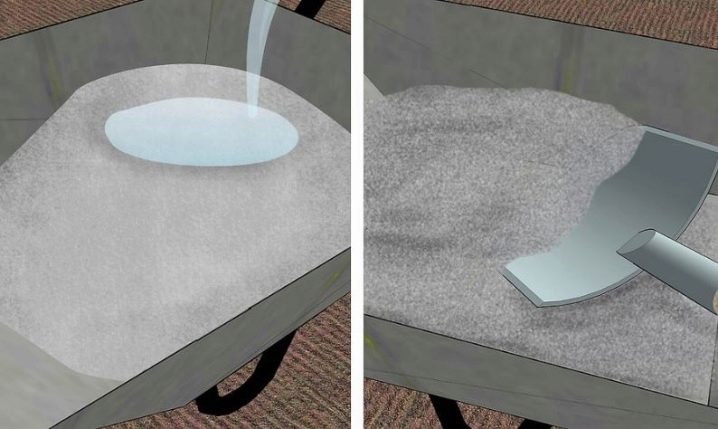
After all the work done, it remains only to monitor the solidification of the laid foundation. The concrete must cure consistently and evenly. In hot weather, its surface is moistened with a small amount of water to prevent the surface from cracking, and in the rain, the solution is covered with a film to prevent excess moisture. A properly cured mixture quickly gains strength and becomes very reliable.
Any foundation must stand at least a month before the construction of the house itself, as it settles and can deform.
On top of the finished foundation, after its shrinkage, it is already possible to install load-bearing walls and special concrete posts, on which logs can be attached under the wooden floor of the first floor and further finishing.
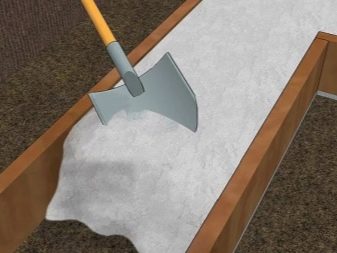
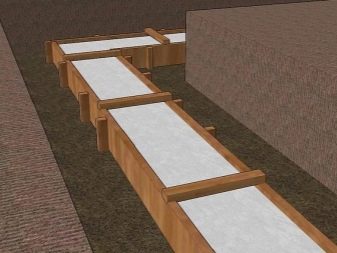
Additional processing
To protect the finished foundation from the effects of various aggressive environments and the effects of low temperatures during the winter frost, it needs additional strengthening with various solutions.
For anti-corrosion protection of the reinforcing layer, it is necessary not only to carry out all construction work correctly: pour concrete over the reinforcement completely, eliminate air pockets, but also treat the metal with special mineral substances. Such substances cover the reinforcement with a layer of oxide and build an additional moisture barrier.

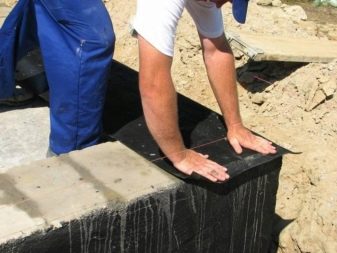
In order to prevent the condensate accumulating on the surface of the concrete tapes from penetrating into the pores of the concrete and not destroying its structure, the foundation can be covered from above with a special bituminous mastic. It allows you to create a smooth layer over which drops of moisture flow down as if on a waxy surface. Since bitumen mastic is a fairly modern material, the old way of isolating porous concrete from moisture penetration was to cover the foundation with the development of machine oil, which made it possible to achieve similar results.
In order to avoid the formation of fungus and mold on concrete, it is enough to purchase a special solution in the store, which is applied to the frozen foundation, and also insulates the foundation well.
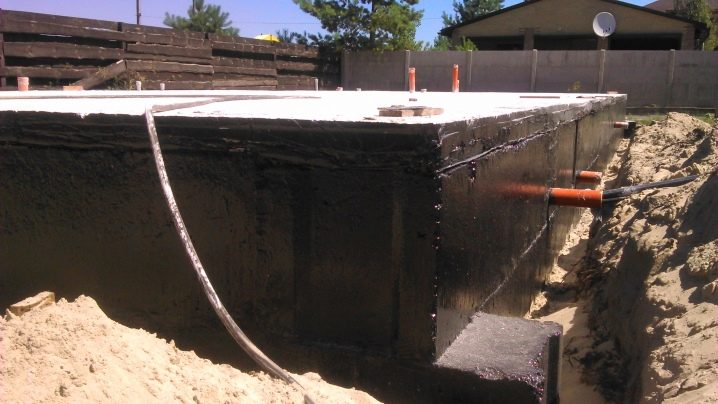
Useful Tips
Experts recommend adhering to a few simple rules when creating a concrete foundation.
- For high-rise and heavy structures, it is best to erect either a slab foundation or a concrete strip foundation. In this case, the tape itself should always be several centimeters thicker than the wall so as not to collapse under its weight. In order to reduce the cost of labor and money, you can erect two types of foundations, alternating between a tape and a columnar base.
- It is best to fill the entire foundation in one go, however, if necessary, you can do this in parts. The main thing is that the break in work does not exceed several days. Before filling the next area, it is necessary to clean it again from debris and dust.
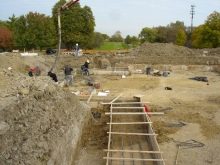
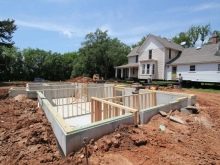
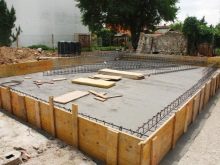
- In order to check the sand for the amount of impurities and contamination, an empty transparent container and ordinary water are enough. Sand is poured into a container, water is poured and everything is well stirred. If a strong turbidity appears, then the impurities in the sand exceed the permissible rate and the quality of the finished concrete will leave much to be desired. In this case, the sand must be picked up from another supplier.
- The technology for installing a tape-type concrete foundation is quite simple, but it is associated with a lot of labor. Erection on your own is possible, but you need to be prepared for the length of the process and the inevitability of minor mistakes. Nevertheless, subject to the basic rules of work, the resulting structure will be quite strong and durable.
For more information on how to make a concrete foundation yourself, see the next video.













The comment was sent successfully.